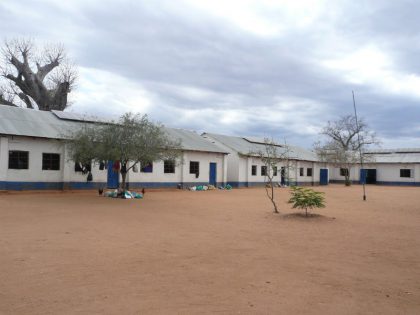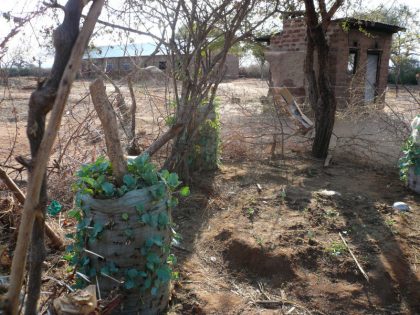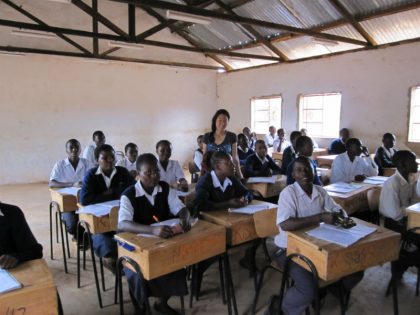 Location
Location
Kithyululu, Kibwezi District, Makueni County, Eastern Province, Kenya
Community Description
Kithyululu is a small market town, located approximately 26 kilometers from the nearest paved road and about 30 kilometers from the Nairobi-Mombasa highway.
Kithyululu Secondary School, located next to the town, is a public mixed day/boarding school with a population of around 160 students — 90 girls and 70 boys. The school currently has twenty-seven boarders — 24 girls and 3 boys.
The current water source of the school is highly unreliable. The water comes from the Chyulu Hills and the pipeline runs as much as 50 km before arriving at the school. The line runs along the dirt road and feeds numerous small market towns that face similar water problems. As a result, by the time the water arrives, there is only a trickle if any water at all.
 During the driest seasons, there is no water from the tap for weeks. This can delay the regular school schedule and often results in the school paying even more money to have water delivered.
During the driest seasons, there is no water from the tap for weeks. This can delay the regular school schedule and often results in the school paying even more money to have water delivered.
Water is used for drinking, cooking, and for boarders to bathe and wash their clothes. The demand for water will only increase as the number of boarders increases and with later development of a permanent boys’ dorm. Water is also needed for planting and growing.
To make the school more self-sufficient and to gain variety in their diet, students have planted a bag garden and kale (“sukuma wiki”) seeds. Additionally, agriculture students in form four (graduating class) are required to perform a practical portion of their national exam.
Currently, the school has a 10,000-liter KenTank, but requires more storage capacity.
Project Description
This project is to purchase and install an additional water tank at the school to expand and utilize the current water storage system.
 Water Charity funds would primarily be used to purchase and transport a 5,000-liter polyethylene water tank to the school. The tank will be placed on a platform to be built next to the girls’ dorm.
Water Charity funds would primarily be used to purchase and transport a 5,000-liter polyethylene water tank to the school. The tank will be placed on a platform to be built next to the girls’ dorm.
Initially, the tank will be filled with water delivered by the Ministry of Water in an economical quantity each month. The delivery will last the school for approximately one month.
The school is working to find a more sustainable way of obtaining water in the future. The school owns a borehole that is two kilometers away and is currently working on getting pipes and a pumping system to deliver the water directly to school. Since this water is very salty, once the pipes are placed, the two water tanks will be used to distinguish between potable water and water for general use.
The community and school will provide concrete and materials needed for the installation of the tank and will cover any additional costs as needed. The fundis (technicians) to install the tank will be from the local community.
Any extra remaining funds will be used for adding gutters to the dormitory to take advantage of the rain in November.
Project Impact
The project will directly benefit 160 students and 15 staff and faculty members, with the potential to reach 500 additional students at the primary school and local community members.
Peace Corps Volunteer Directing Project
Julia Cheng
Comments
Most importantly, this project provides a reliable and consistent supply of water for the needs of the school. It also provides economic benefit in the short term with purchased water, and a part of a longer-term solution with storage of water from a nearby borehole.
Dollar Amount of Project
$555.00
Donations Collected to Date
$555.00
Dollar Amount Needed
$0.00 – This project has now been fully funded through the generosity of Anonymous, of Fort Collins, CO, USA, who contributed $375, together with friends and family of Peace Corps Volunteer Julia Cheng.
An additional $375 for future projects to be implemented by Julia and her colleagues in Kenya was contributed by Ryder Taff, of Tougaloo, MS, USA.
We encourage others to continue to donate using the Donate button below, and we will notify Julia of your donation. Additional funds will be used to fund the next project by Julia and/or those of other PCVs in the country of service.
![]()
This project has been finished. To read about the conclusion of the project, CLICK HERE.